We recently spent an enjoyable day at the Beamish Museum https://www.beamish.org.uk/ ‘The Living Museum of the North’. It is a vast site and includes relocated buildings making up a small town, pit village, colliery, farm, railway station and much more, all connected by a tramway and other forms of period transport. What really brings it to life is the small army of staff and volunteers who clearly enjoy living out the lives of the characters they depict. It was school-trip season but that didn’t detract and it was good to see young people engaging with all that was on offer.



I am sure we will return on the annual pass offer (pay once and return as often as you like in the next twelve months). Hopefully one or two more blogs to follow shortly but in the meantime here are a few ‘Beamish People’. I couldn’t resist a bit of post shutter editing as these seemed to cry out for some monochrome treatment. I hope you agree.







 We last visited Grange-over-Sands about 15 years ago and as expected, nothing has changed and we were pleased about that. The town has a sort of timeless charm and doesn’t need to change. That of course is spoken as a tourist; residents may or may not agree.
We last visited Grange-over-Sands about 15 years ago and as expected, nothing has changed and we were pleased about that. The town has a sort of timeless charm and doesn’t need to change. That of course is spoken as a tourist; residents may or may not agree.![T�XQt55uPpu�!
$MI � �E'5wG UU []��g�u� _Ve T _](https://johnspostcardsblog.com/wp-content/uploads/2019/07/grange-3.jpg?w=760)
![T�XQt55uPpu�!
$MI � �E'5wG UU []��g�u� _Ve T _](https://johnspostcardsblog.com/wp-content/uploads/2019/07/grange-5.jpg?w=760)
 The station building was designed mid-1860s and was tastefully restored to its former glory in the late 1990s. It is a delightful building. The light and shade through the glass canopy created this fascinating effect on the platform.
The station building was designed mid-1860s and was tastefully restored to its former glory in the late 1990s. It is a delightful building. The light and shade through the glass canopy created this fascinating effect on the platform. The train was about to leave for Manchester Airport, calling at such places as Carnforth, Lancaster, Preston, Wigan, Manchester Oxford Road and Piccadilly, all a far cry from sleepy little Grange.
The train was about to leave for Manchester Airport, calling at such places as Carnforth, Lancaster, Preston, Wigan, Manchester Oxford Road and Piccadilly, all a far cry from sleepy little Grange.![T�XQt55uPpu�!
$MI � �E'5wG UU []��g�u� _Ve T _](https://johnspostcardsblog.com/wp-content/uploads/2019/07/grange-8.jpg?w=760)
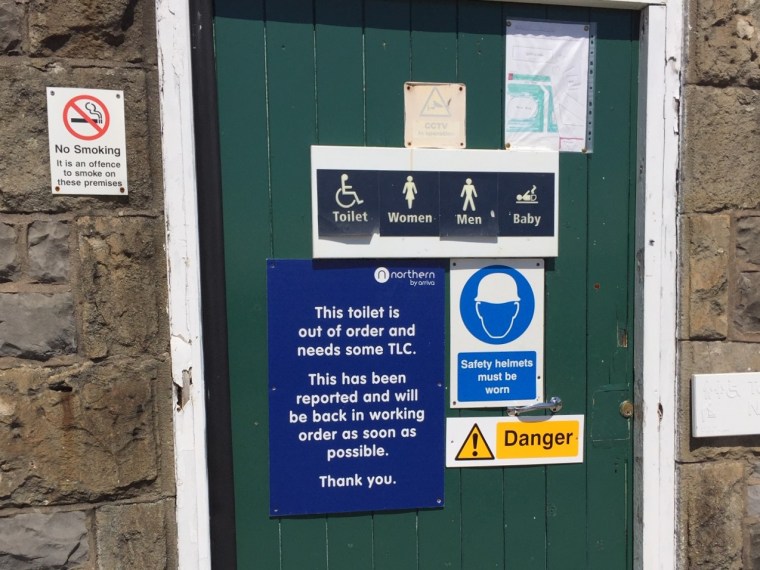

 We have just returned home from a few days in the Carnforth area of Lancashire. Mid-way between the Lake District and the Yorkshire Dales, it gave us an ideal opportunity to revisit some old haunts and discover some new ones. Having seen many photographs of the Ribblehead Viaduct I thought this was a good chance to have a shot at it. I had always imagined it to be in a very remote area and assumed photographers had yomped miles across moorland and bogs, carrying heavy photographic equipment, in order to get the perfect shot. Surely we would be the only people around for miles. How wrong could I be. The reality is that the viaduct is just off the B6255 between Ingleton and Hawes, complete with layby parking, tea stall and a good path to the viaduct and beyond. Another example of reality not quite living up to expectations. We just managed to get one of the remaining parking spots.
We have just returned home from a few days in the Carnforth area of Lancashire. Mid-way between the Lake District and the Yorkshire Dales, it gave us an ideal opportunity to revisit some old haunts and discover some new ones. Having seen many photographs of the Ribblehead Viaduct I thought this was a good chance to have a shot at it. I had always imagined it to be in a very remote area and assumed photographers had yomped miles across moorland and bogs, carrying heavy photographic equipment, in order to get the perfect shot. Surely we would be the only people around for miles. How wrong could I be. The reality is that the viaduct is just off the B6255 between Ingleton and Hawes, complete with layby parking, tea stall and a good path to the viaduct and beyond. Another example of reality not quite living up to expectations. We just managed to get one of the remaining parking spots.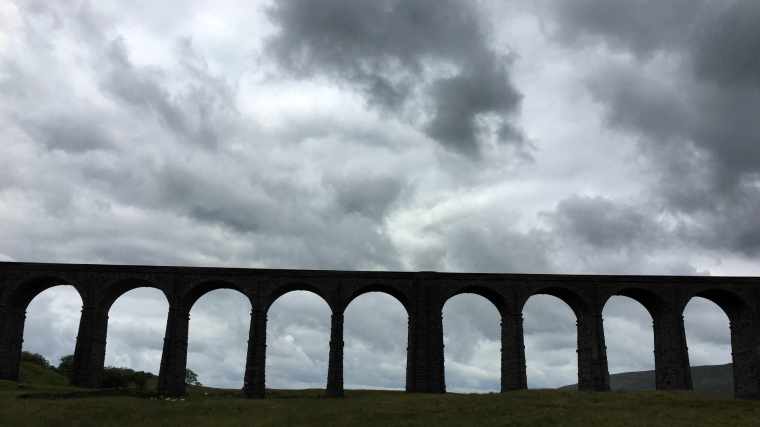
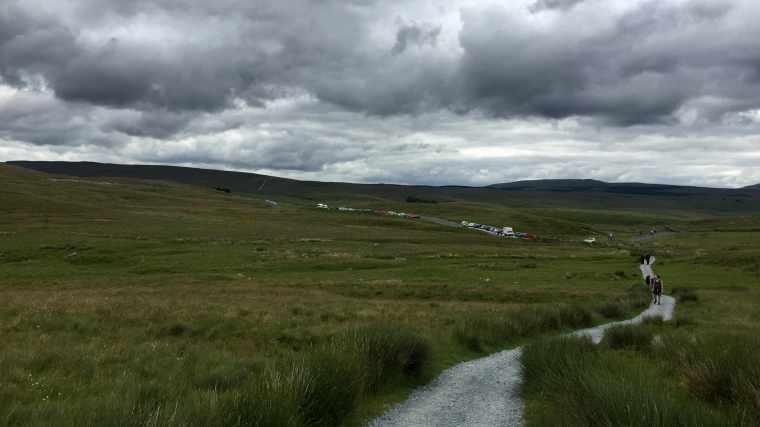
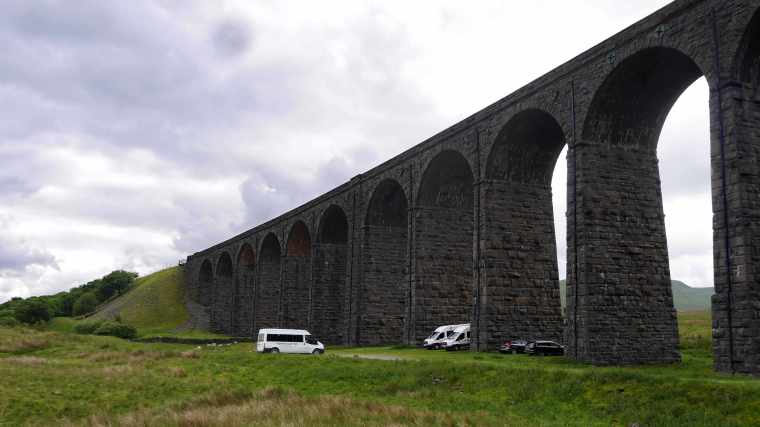 I really am disillusioned now! Mini buses and cars parked beneath it!
I really am disillusioned now! Mini buses and cars parked beneath it!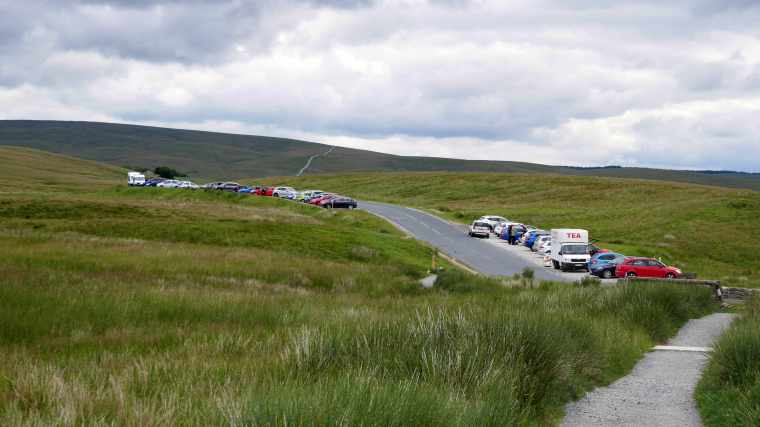
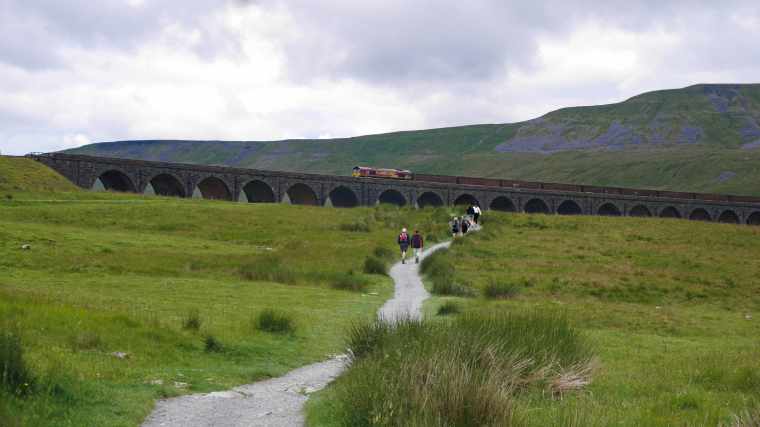 The viaduct is still in use and we saw several trains while we were there.
The viaduct is still in use and we saw several trains while we were there. So much for yomping with heavy cameras! A few steps from the road with a mobile phone.
So much for yomping with heavy cameras! A few steps from the road with a mobile phone. The weather was brighter when we returned home and this is the view from the other side.
The weather was brighter when we returned home and this is the view from the other side.